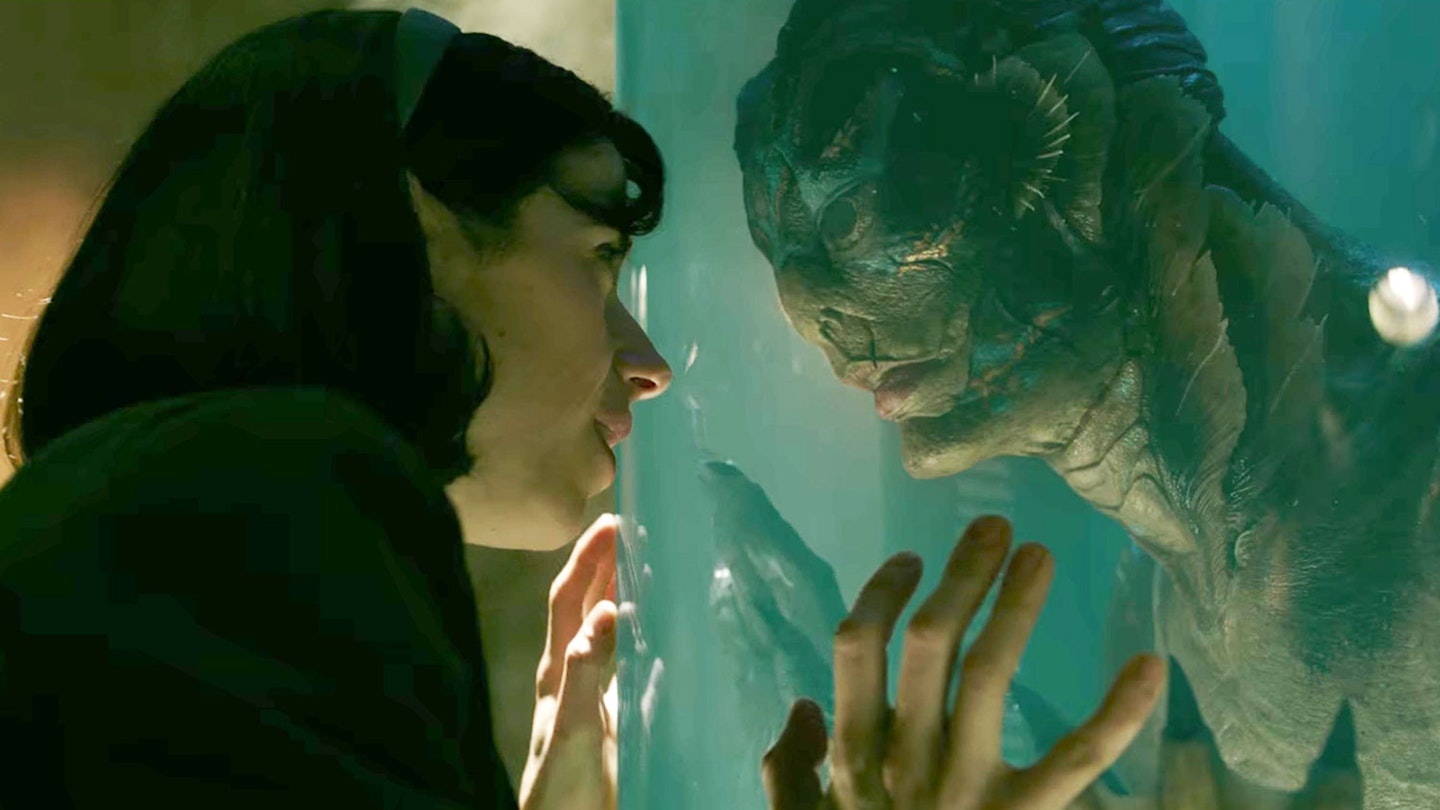How many directors could make you root for a woman to get it on with a dead-eyed fish-man who eats cats? The list cannot be much longer than just ‘Guillermo del Toro’. Nobody makes horror quite so romantic. At his very best, del Toro’s work holds dream, nightmare and realism in perfect balance, pulling you in to terrible worlds, holding your hand just tight enough that you feel safe. From those fantasy worlds he looks out at our world, in all its cruelty. Pan’s Labyrinth was, until now, the best example of his skills. The Shape Of Water is its equal.
It’s set in the early 1960s, which is exactly the right era for a film about fear and liberation. The air is heavy with Cold War paranoia. In an underground secret lab, scientists are studying a creature (Doug Jones) captured in South America. It’s humanoid, but slickly amphibious, with gills, spines and very sharp teeth. A fearsome government agent, Strickland (Michael Shannon, adding another indelible monster to his menagerie), oversees the experiments on the creature, insistent that it be, quite literally, picked apart so the US can extract all its secrets and get one over on the Russians. The creature is described as one of the greatest discoveries in the history of mankind, worshipped as a god in its original environment. But it’s used as research material — a way for powerful men to gain more power.
It's a movie that will grow with repeat watches, quiet side stories getting louder with familiarity.
Into this dark place shines Elisa (Sally Hawkins), a cleaner at the lab and a one-woman revolution. A childhood injury left Elisa mute and her silence seems to make her a trusted ear for those with little voice in mid-century society. Her best friends are a closeted gay man (Richard Jenkins) and an African-American co-worker (Octavia Spencer). When Eliza spots the creature and sees how horribly he’s treated, she tries to connect with him and make him feel better. As they get to know each other, they form a bond. A romantic bond.
The way del Toro builds this highly improbable romance is incredibly clever. The fact that Elisa is as silent as the creature puts them on an even footing. If she could speak, her attempts to converse with him might make him seem like a pet. Because they both communicate through action, they’re equal in the conversation. They grow closer through sign language, body language and music. Before you know it, it seems completely reasonable that a human woman might fancy a buff sea creature.
It’s a cute film, but it’s not cutesy. There are musical dream sequences and magical-realism, but there’s violence and blood and harsh reality. It’s not just a fairy tale, but a pretty urgently moral, political film, like Pan’s Labyrinth. Finding modern parallels for greed-motivated leaders who fear equality isn’t hard.
At its heart is a superlative performance by Hawkins. She is a naturally sympathetic actor, with a face that in repose looks like it’s just been shouted at. She’s always a quiet, thoughtful screen presence, but playing a woman who lacks the power of speech she’s forceful, with feet firmly planted. Del Toro tells us immediately that this isn’t some pristine Disney princess made flesh by showing Elisa masturbating in the bath, with a timer on so that she’s done before her breakfast’s cooked. The woman is practical. Hawkins uses every muscle in that expressive face to give us a woman who exists without sound but whose emotions scream.
The Shape Of Water is a movie that will grow with repeat watches, quiet side stories getting louder with familiarity. On first viewing it’s a flood of wondrous moments and sinister, beautiful images. As it settles, as you think on it for weeks after, its deeper meanings rise to the surface.








